The Intriguing History of the Indian Rupee and it’s Evolution
The history of Indian currency not only spans centuries but also boasts quite a fascinating past. Read on for a brief glimpse of India’s – and your wallet’s – financial history.
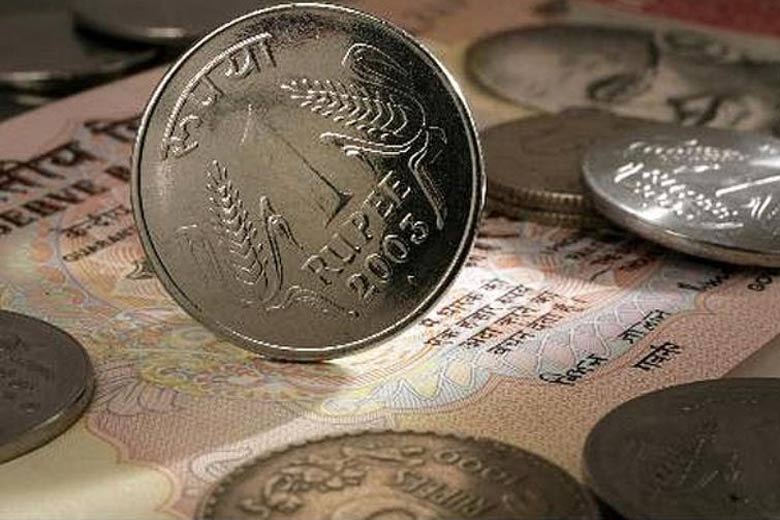
The history of Indian currency not only spans centuries but also boasts quite a fascinating past. Read on for a brief glimpse of India’s – and your wallet’s – financial history.
The rupee in your pocket has a mysterious past. Behind Mahatma Gandhi’s smiling face lies a long history of struggle, exploration, and wealth that can be traced back to the ancient India of the 6th century BC. Let’s demystify this history by bringing you the interesting stories about how Indian currency has evolved over the ages into the rupee of today.

Photo Source
Ancient Indians were the earliest issuers of coins in the world, along with the Chinese and Lydians (from the Middle East). The first Indian coins – punch marked coins called Puranas, Karshapanas or Pana – were minted in the 6th century BC by the Mahajanapadas (republic kingdoms) of ancient India. These included Gandhara, Kuntala, Kuru, Panchala, Shakya, Surasena, and Saurashtra.
Made of silver of a standard weight but with irregular shapes, these coins had different markings – for example, Saurashtra had a humped bull, Dakshin Panchala had a Swastika, and Magadha had several symbols.
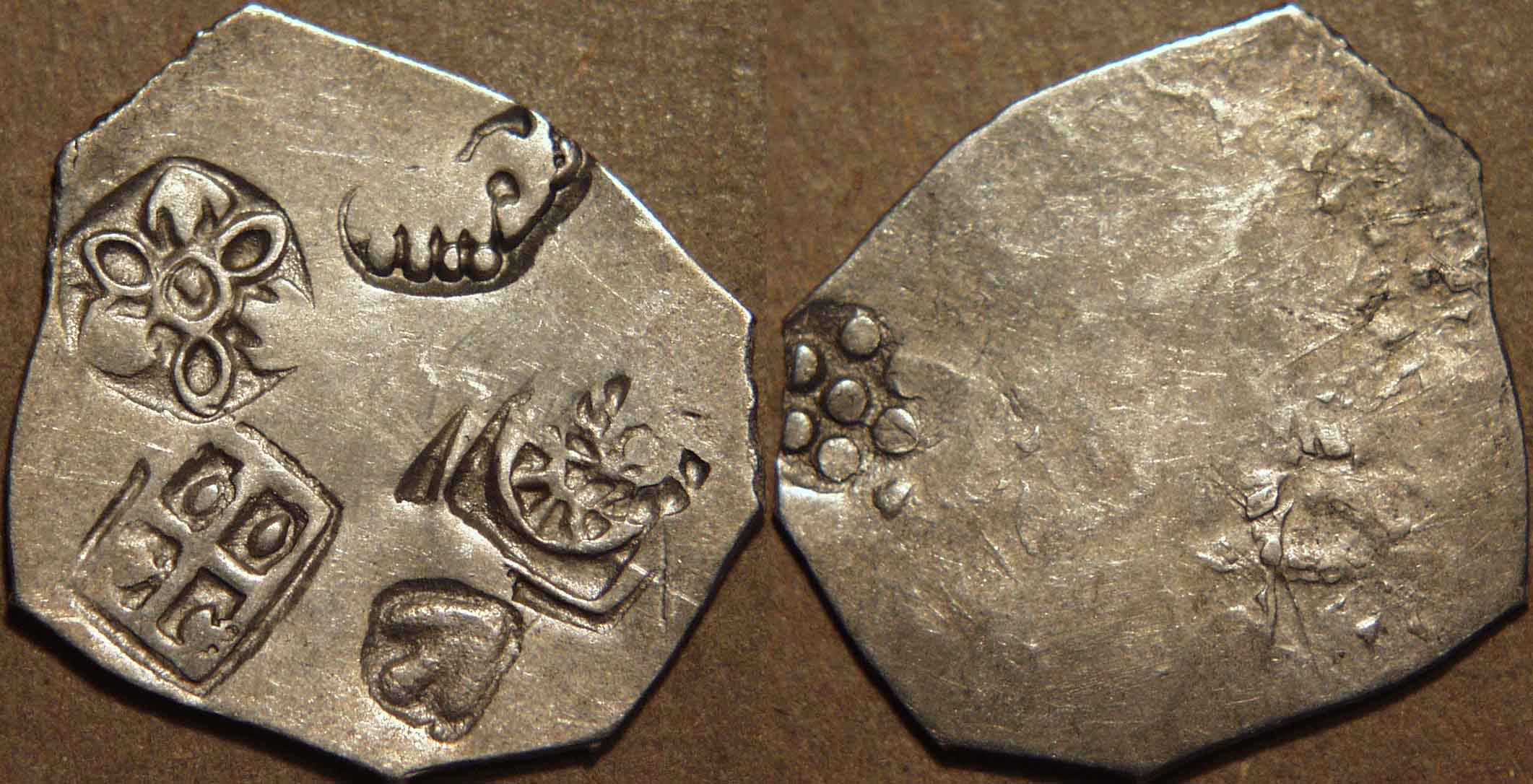
Photo Source
Then came the Mauryas who punch marked their coins with a royal standard. Chanakya, prime minister to the first Mauryan emperor Chandragupta Maurya, mentions the minting of coins such as rupyarupa (silver), suvarnarupa (gold), tamararupa (copper) and sisarupa (lead) in his Arthashastra treatise.
The Indo-Greek Kushan kings who came next introduced the Greek custom of engraving portrait heads on coins. Their example was followed for eight centuries. The extensive coinage of the Kushan empire also influenced a large number of tribes, dynasties, and kingdoms, which began issuing their own coins.
Kushan coins had the diademed, helmeted bust of the king on one side, and the king’s favourite deity on the reverse.
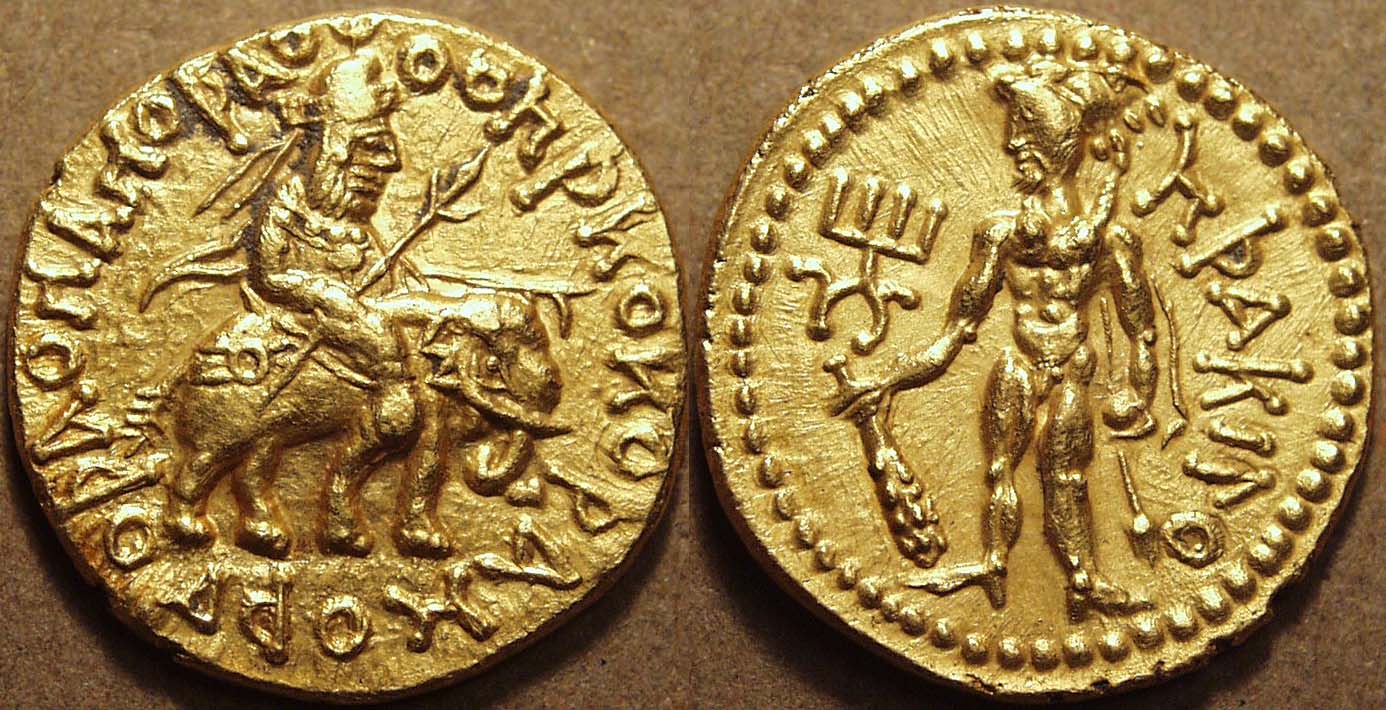
Photo Source
The Gupta Empire produced large numbers of gold coins depicting the Gupta kings performing various rituals. This tradition of intricately engraved coins continued till the arrival of the Turkish Sultanate in North India.
The Gupta coins, with their many varieties and inscriptions in Sanskrit, are among the finest India has produced.
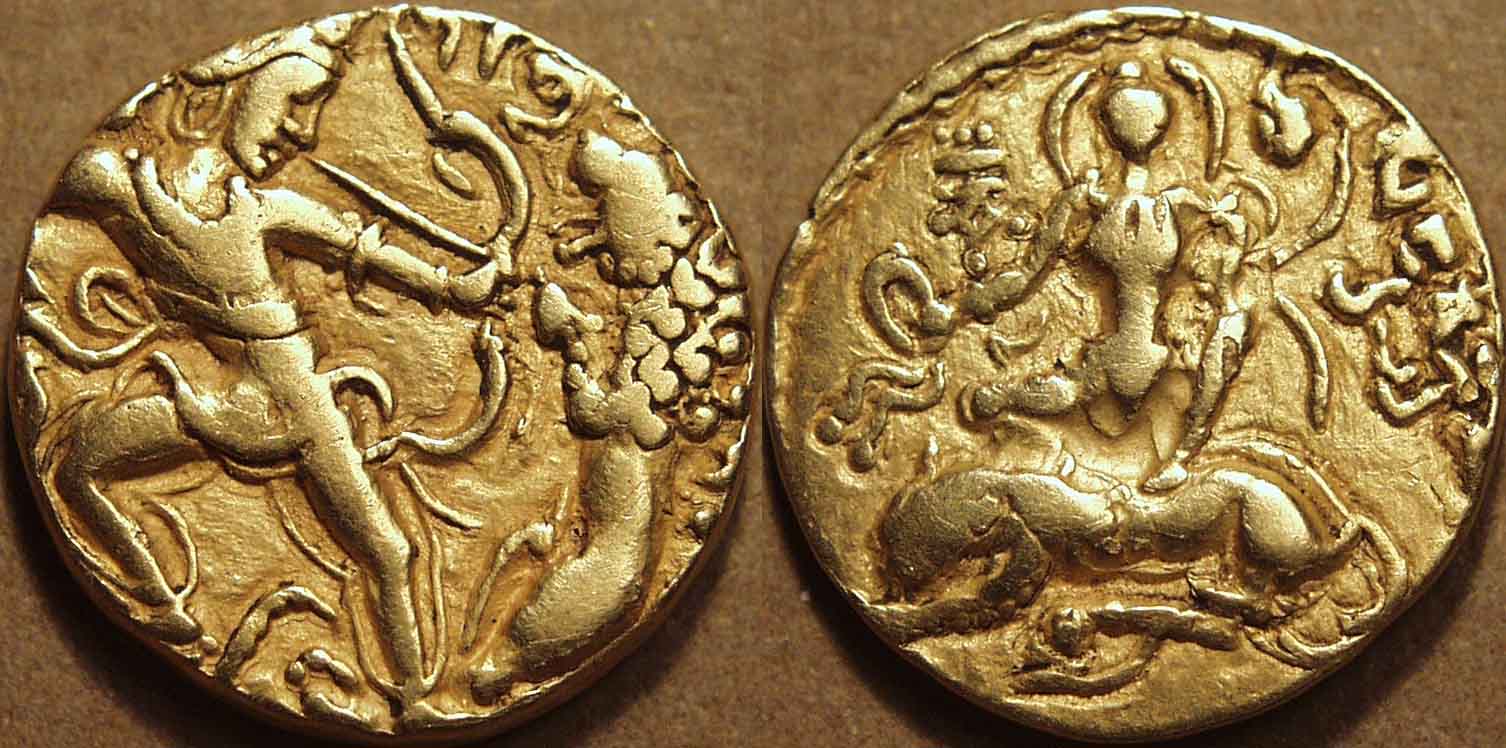
Photo Source
By the 12th century AD, the Turkish Sultans of Delhi had replaced the royal designs of Indian kings with Islamic calligraphy. The currency – made in gold, silver and copper – was now referred to as tanka, with the lower valued coins being called jittals. The Delhi Sultanate also attempted to standardise the monetary system by issuing coins of different values.
The commencement of the Mughal Empire from 1526 AD brought forth a unified and consolidated monetary system for the entire empire.
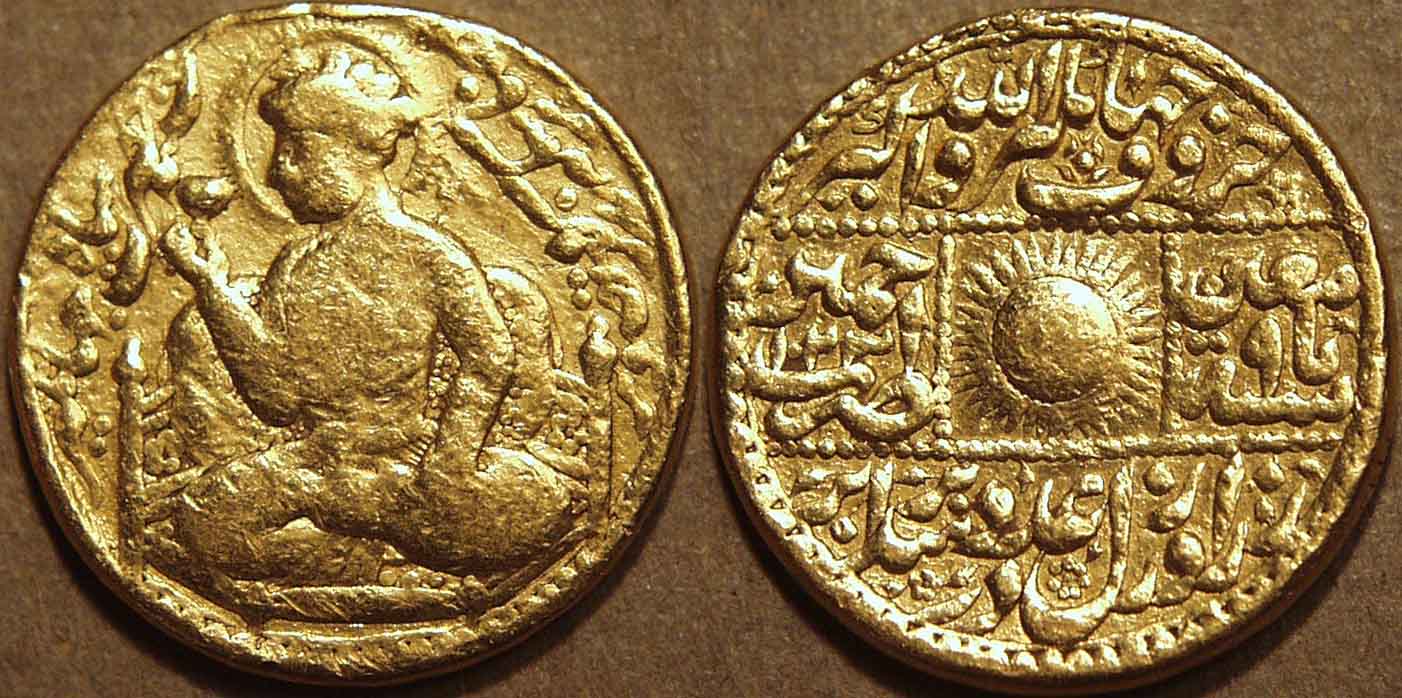
Photo Source
But the defining moment in the evolution of the rupee occurred when, after defeating Humayun, Sher Shah Suri set up a new civic and military administration. He issued a coin of silver, weighing 178 grains, which was termed the rupiya and was divided into 40 copper pieces or paisa. The silver coin remained in use during the remaining Mughal period.
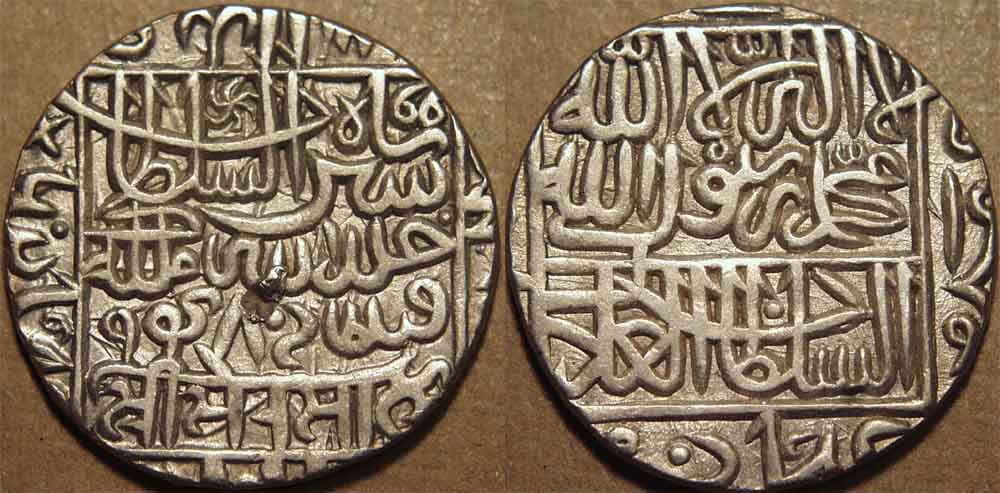
Photo Source
By the time the British East India Company set itself up in India in the 1600s, Sher Shah’s silver rupiya had already become the popular standard currency in the country. Despite many attempts to introduce the sterling pound in India, the rupaiya grew in popularity and was even exported as a currency to other British colonies.
You May Also Like: 14 Fascinating and Perplexing Unsolved Mysteries of Indian History
In 1717 AD, the English obtained permission from Mughal emperor Farrukh Siyar to coin Mughal money at the Bombay Mint. The British gold coins were termed carolina, the silver coins angelina, the copper coins cupperoon, and the tin coins tinny.
Paper money was first issued in British India in the 18th century, with the Bank of Hindostan, General Bank in Bengal and the Bengal Bank becoming the first banks in India to issue paper currency.
The oldest surviving banknote in India was issued by the Bank of Bengal – a Two Hundred and Fifty Sicca Rupees note dated September 3, 1812.

Photo Source
After the 1857 revolt, the British made the rupee the official currency of colonial India, with the head of King George VI replacing native designs on banknotes and coins.

Photo Source
In 1862, the Victoria portrait series of bank notes and coins were issued in honour of Queen Victoria and later, many emperors followed suit. For security reasons, the notes of this series were cut in half; one half was sent by post and upon confirmation of receipt, the other half was sent.
The Reserve Bank of India was formally set up in 1935 and was empowered to issue Government of India notes. RBI also printed 10,000 rupee notes (the highest denomination RBI has ever printed in its history) that were later demonetised after independence.
The first paper currency issued by RBI was a 5 rupee note bearing King George VI’s portrait, in January 1938.

Photo Source
After India became independent in 1947, India’s monetary system remained unchanged for a while, with 1 rupee consisting of 64 pice. The first banknote printed by independent India was a 1 rupee note.
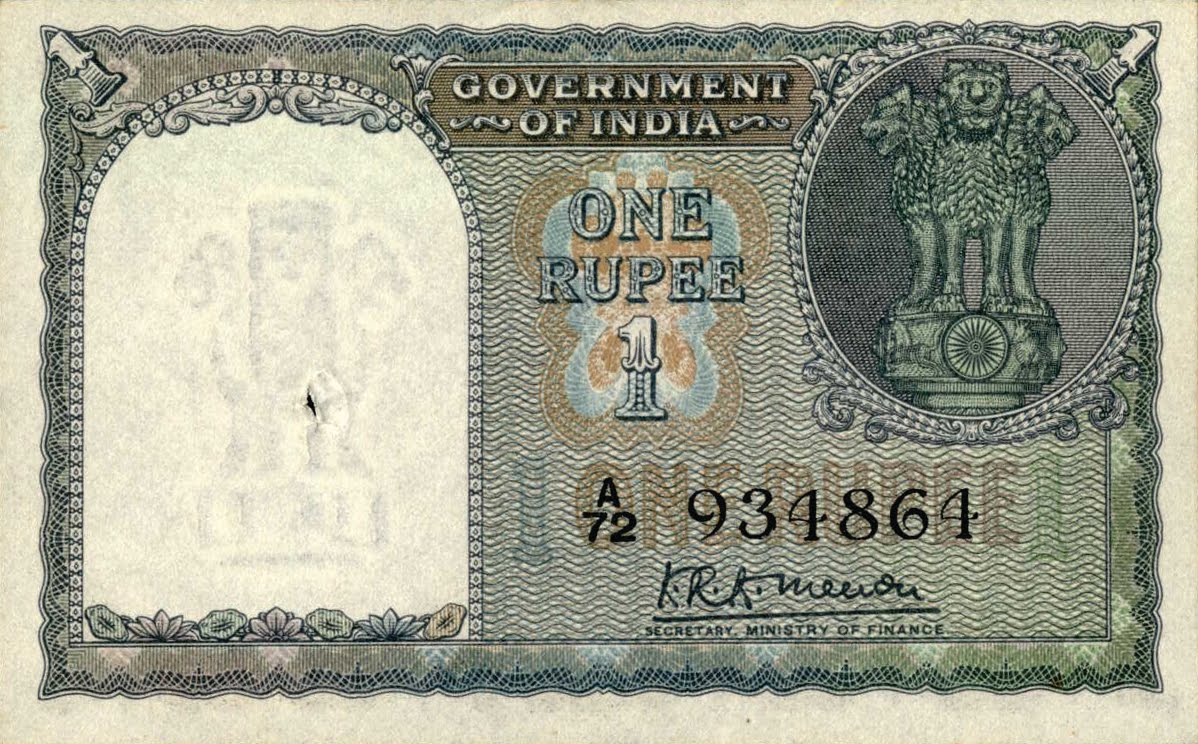
Photo Source
On August 15, 1950, the new ‘anna system’ was introduced – the first coinage of the Republic of India. The British King’s portrait was replaced with the engraving of Ashoka’s Lion Capital of Sarnath, and the tiger on the 1 rupee coin was replaced with a corn sheaf. One rupee now consisted of 16 annas.
The 1955 Indian Coinage (Amendment) Act, which came into force on April 1, 1957, introduced a ‘decimal series’. The rupee was now divided into 100 paisa instead of 16 annas or 64 pice.The coins were initially called naye paise, meaning new paise, to distinguish them from the previous coins.
In order to aid the blind in the country, each coin had distinctly different shapes – the round 1 naya paisa, scalloped edge 2 naya paisa, the square 5 naya paisa, and the scalloped edge 10 naya paisa.

Photo Source
Also, prior to Independence, the Indian currency was pegged against silver. The silver-based rupee fluctuated according to the value of silver and had a distinct disadvantage when trading against currencies that were based on the gold standard. This was rectified post-Independence.
In 1959, a special issue of Rupees 10 and Rupees 100 notes took place for Indian Haj pilgrims so as to ease money exchange with the local currency in Saudi Arabia.
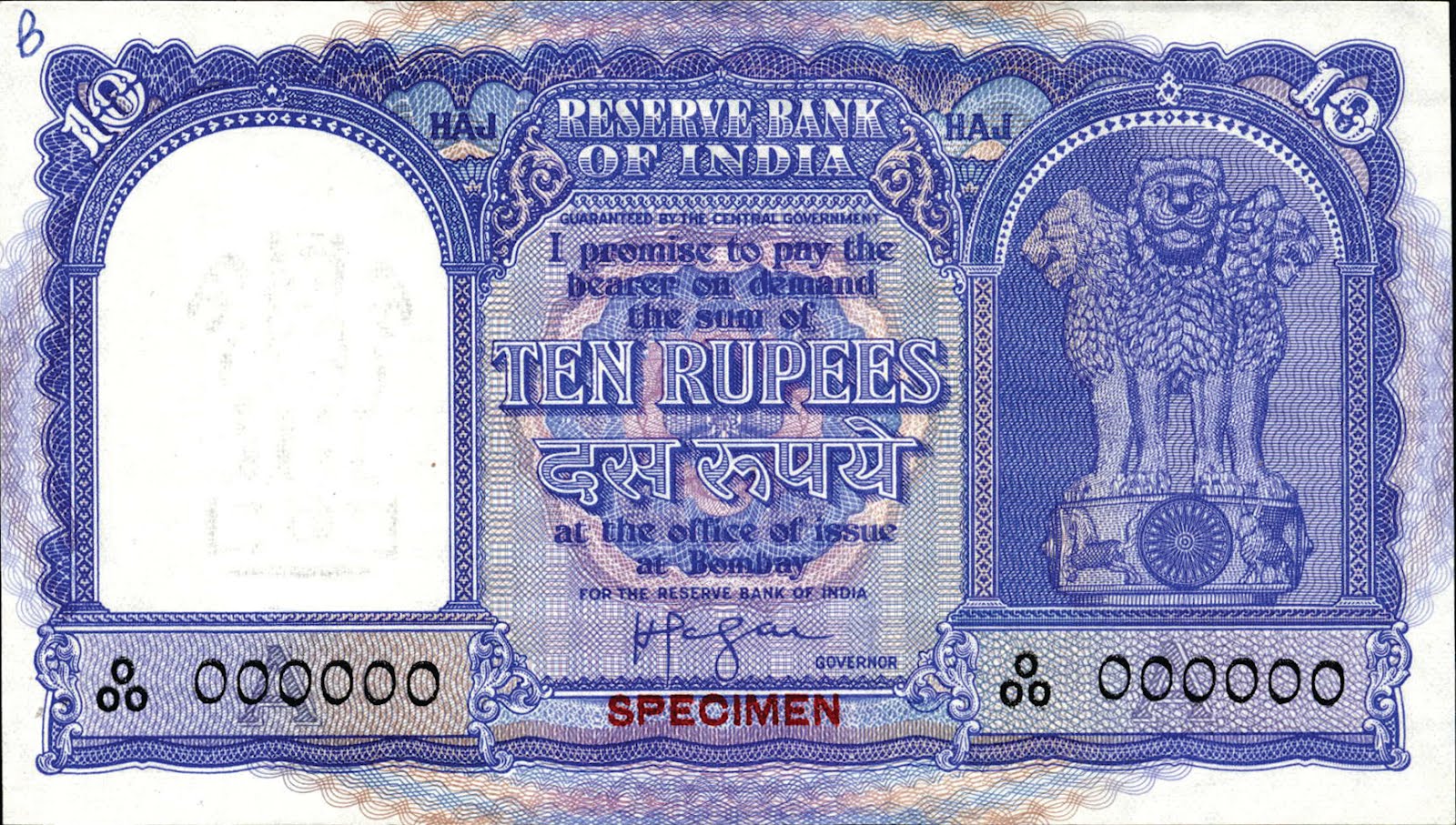
Photo Source
In 1969, the Mahatma Gandhi Birth Centenary Commemorative Issue was released. It was the only commemorative note issue ever by the Reserve Bank of India.
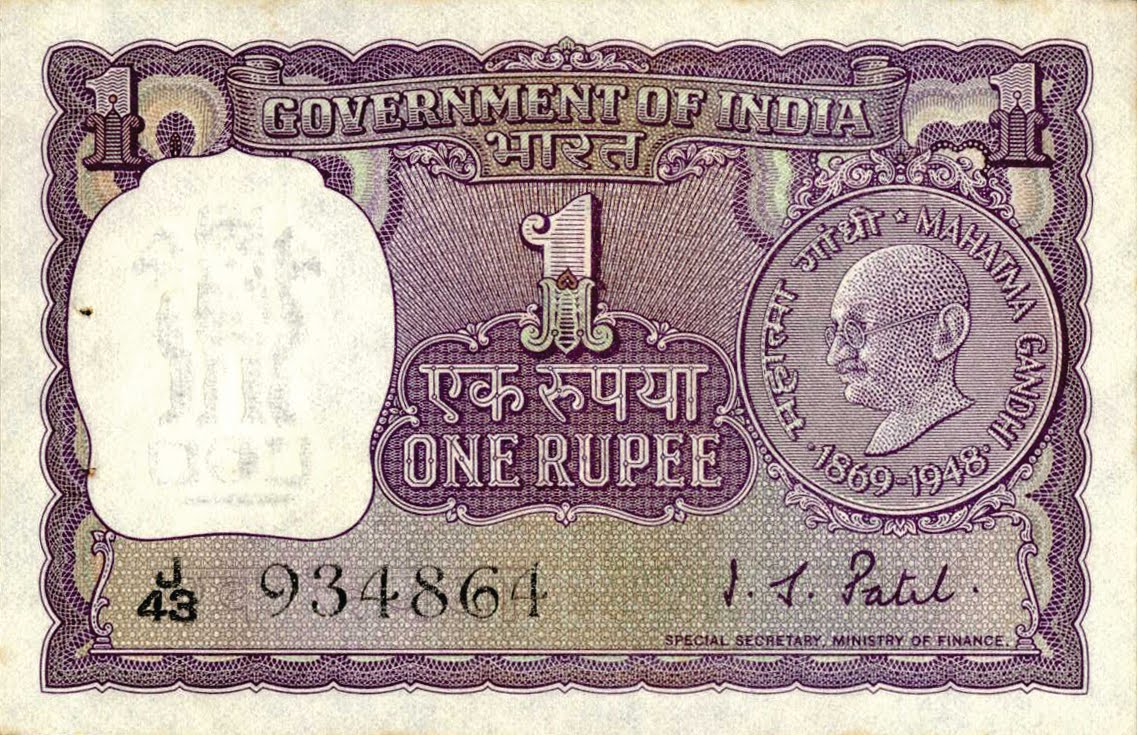
Photo Source
Later, in 1996, the ‘Mahatma Gandhi Series’ was introduced with prominent new features such as changed watermarks, windowed security threads, latent images, and intaglio features for the visually handicapped. This was replaced in 2005 by the ‘MG series’ notes that had some additional security features.
In 2010, India celebrated its hosting of the Commonwealth Games with commemorative 2 and 5 Rupee coins. One side of these coins features the logo of the Games while the other features the three lions from the pillar of Ashoka. In the same year, India also adopted the new symbol for the rupee ₹, with new coins bearing this symbol being launched in 2011.
Since 2010, other commemorative coins have also been issued – 60th anniversary of the Indian Parliament, 150th anniversary of Swami Vivekananda, and more recently, International Day of Yoga.
Also Read: 16 Fascinating Facts about Mohenjodaro and Indus Valley, a Civilisation Far Ahead of its Time
Like this story? Have something to share? Email: [email protected], or join us on Facebook and Twitter (@thebetterindia). To get positive news on WhatsApp, just send ‘Start’ to 090 2900 3600 via WhatsApp.
This story made me
-
97
-
121
-
89
-
167
Tell Us More
We bring stories straight from the heart of India, to inspire millions and create a wave of impact. Our positive movement is growing bigger everyday, and we would love for you to join it.
Please contribute whatever you can, every little penny helps our team in bringing you more stories that support dreams and spread hope.



















